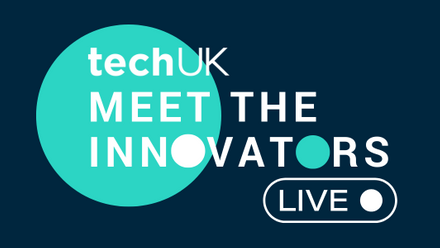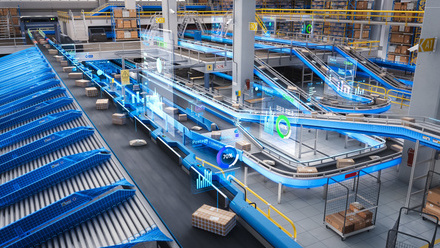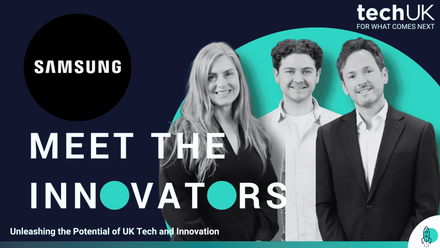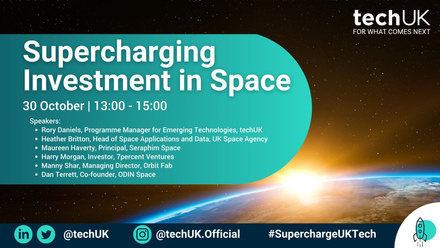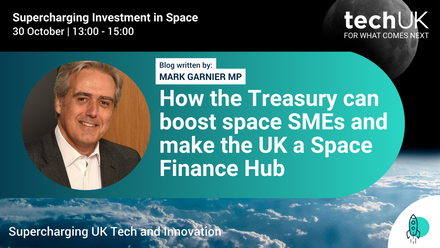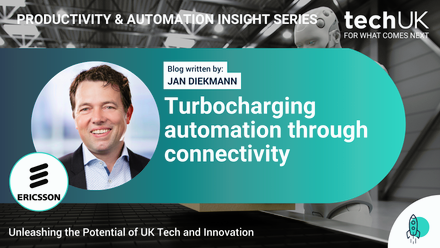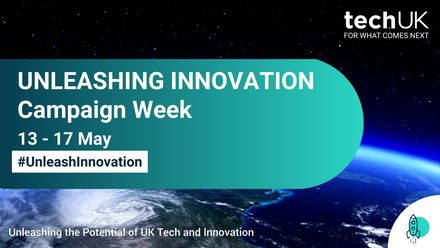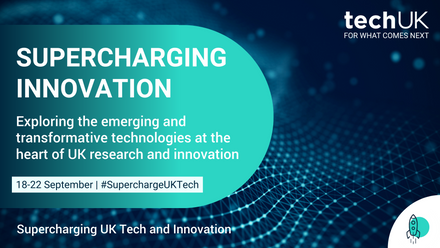Empowering the tech revolution with advanced 5G technology
We are on the cusp of perhaps the biggest step-change in technology since the invention of the World Wide Web. The converging development of advanced AI language models, extended reality and quantum computing are about to transform fields like applied research and innovation beyond recognition.
But while the doors these technologies will open for the research and innovation community are sparking excitement around the world, an equally important conversation is often overshadowed: how to deliver the network infrastructure we need to support them. Smart cities, autonomous vehicles and connected farms are all tantalising prospects for productivity and living standards, but the truth is that there is a lot of work still to do to build the networks that they will rely on.
In the UK, swift action is particularly imperative. 5G, particularly standalone 5G (5GSA), is set to become the cornerstone of the impending tech revolution, but our progress in its implementation is lagging. The most recent Ofcom Connected Nations report starkly illustrates our challenge. It found that the UK has the lowest 5G population coverage of the major European nations, at just 77% compared to Italy's 99.7%. It’s worth noting that much of this 77% also uses Dynamic Spectrum Sharing (DSS), a technology that allows 4G and 5G to use the same spectrum, allowing for faster deployment but lower capacity.
The problem in the UK is primarily one of a lack of available investment. Last year, the Digital Connectivity Forum and Frontier Economics found in their report - The Investment Gap to Full 5G Rollout - that the industry can invest approximately £9 billion in new network infrastructure by 2030, compared to the £23-25 billion that needs investing for full 5G.The reasons for this are complex but a core factor is that two of our four mobile network operators – Three and Vodafone – are sub-scale and facing cashflow issues in an increasingly high-cost environment. This is a market failure we are trying to address through our proposed merger.
The initial rollout of 5G is also just the first step on a much longer road to advanced 5G adoption. Indeed, 5G as we currently know it is not enough to fully unlock the potential of a future digital economy. In the first instance, network operators are rolling out “non-standalone” 5G to increase network capacity at sites. This is an interim solution where 5G is being built into our radio access network (RAN) but the core of each site, akin to its brain, is still using 4G technology. When you see 5G next to your signal bars in the corner of your phone, this is the level of technology you are currently benefiting from. Is it better than 4G? Yes. Does it represent the necessary leap forward in network technology to power the coming tech revolution? Not yet.
5GSA, on the other hand, will bring a faster, more reliable and vastly more capable network. Unlike non standalone 5G, 5GSA has an advanced 5G core as well as external 5G hardware. This allows for new functions in the network that will have enormous and transformational impacts that fast-track the UK's innovative capabilities.
For example, 5GSA would enable multi-access edge computing, allowing for cloud computing capabilities in the 5GSA network. This means network operators like Three can reduce the load on the core network at the same time as providing specific, high capacity and high-speed network services to certain sets of customers. This could, for example, underpin collaborative computing in research spaces that require significant levels of data processing, or even bolster the deployment of specific applications like a smart, autonomous car network.
Similarly, 5GSA enables the simultaneous connectivity of diverse future technologies through network slicing. Network slicing permits the operation of distinct networks on the same physical infrastructure. The possibilities that emerge from this are hugely exciting. Using the same common infrastructure, you could operate smart homes, connected cars and remote healthcare using slices of signal optimised for each of these use cases and not interfering with one another. For example, the smart home slice would be optimised for high bandwidth, the connected car slice for low latency and the remote healthcare slice for energy efficiency – all from the same network infrastructure.
This is hugely important because a common feature of many of the technologies we see on our horizon is that they are based on integrated network architecture but will need to operate distinctly from one another. Different use cases and technologies pose particular challenges, whether this be the need for bandwidth, speed or low latency. New functionality like multi-access edge computing and network slicing will allow us to meet these diverse challenges and provide tailored and effective networks at scale.
The future of technology has rarely felt as exciting as it does now. But for all the anticipation around what will soon be technologically possible, we must give due attention to building a world-leading network to ensure that we have the infrastructure we need to make these possibilities realities. This will mean a tight focus on unlocking network investment, removing barriers to deployment and positioning the UK at the forefront of research and innovation in future telecoms (for example in working to set the standards for what 6G technology will look like).
Mobile networks are often taken for granted, but they are the lifeblood of a digitally integrated and innovative economy. Few steps will supercharge UK tech and innovation more than the effective rollout of a cutting-edge 5GSA mobile network.
techUK – Unleashing UK Tech and Innovation
The UK is home to emerging technologies that have the power to revolutionise entire industries. From quantum to semiconductors; from gaming to the New Space Economy, they all have the unique opportunity to help prepare for what comes next.
techUK members lead the development of these technologies. Together we are working with Government and other stakeholders to address tech innovation priorities and build an innovation ecosystem that will benefit people, society, economy and the planet - and unleash the UK as a global leader in tech and innovation.
For more information, or to get in touch, please visit our Innovation Hub and click ‘contact us’.
Latest news and insights
Other forms of content
Sprint Campaigns
techUK's sprint campaigns explore how emerging and transformative technologies are developed, applied and commercialised across the UK's innovation ecosystem.
Activity includes workshops, roundtables, panel discussions, networking sessions, Summits, and flagship reports (setting out recommendations for Government and industry).
Each campaign runs for 4-6 months and features regular collaborations with programmes across techUK.
techUK's latest sprint campaign is on Robotics & Automation technologies. Find out how to get involved by clicking here.
Running from September to December 2023, this sprint campaign explored how the UK can lead on the development, application and commercialisation of space technologies, bring more non-space companies into the sector, and ultimately realise the benefits of the New Space Economy.
These technologies include AI, quantum, lasers, robotics & automation, advanced propulsion and materials, and semiconductors.
Activity has taken the form of roundtables, panel discussions, networking sessions, Summits, thought leadership pieces, policy recommendations, and a report. The report, containing member case studies and policy recommendations, was launched in March 2024 at Satellite Applications Catapult's Harwell campus.
Get in touch below to find out more about techUK's ongoing work in this area.
Event round-ups
Report
Insights
Get in touch
Running from January to May 2024, this sprint campaign explored how the UK can lead on the development, application and commercialisation of the technologies set to underpin the Gaming & Esports sector of the future.
These include AI, augmented / virtual / mixed / extended reality, haptics, cloud & edge computing, semiconductors, and advanced connectivity (5/6G).
Activity took the form of roundtables, panel discussions, networking sessions, Summits, and thought leadership pieces. A report featuring member case studies and policy recommendations was launched at The National Videogame Museum in November 2024.
Get in touch below to find out more about techUK's future plans in this space.
Report
Event round-ups
Insights
Get in touch
Running from July to December 2024, this sprint campaign explored how the UK can lead on the development, application and commercialisation of web3 and immersive technologies.
These include blockchain, smart contracts, digital assets, augmented / virtual / mixed / extended reality, spatial computing, haptics and holograms.
Activity took the form of roundtables, workshops, panel discussions, networking sessions, tech demos, Summits, thought leadership pieces, policy recommendations, and a report (to be launched in 2025).
Get in touch below to find out more about techUK's future plans in this space.
Event round-ups
Insights
Get in touch
Running from February to June 2025, this sprint campaign is exploring how the UK can lead on the development, application and commercialisation of robotic & automation technologies.
These include autonomous vehicles, drones, humanoids, and applications across industry & manufacturing, defence, transport & mobility, logistics, and more.
Activity is taking the form of roundtables, workshops, panel discussions, networking sessions, tech demos, Summits, thought leadership pieces, policy recommendations, and a report (to be launched in Q4 2025).
Get in touch below to get involved or find out more about techUK's future plans in this space.
Upcoming events
Insights
Event round-ups
Get in touch
Campaign Weeks
Our annual Campaign Weeks enable techUK members to explore how the UK can lead on the development and application of emerging and transformative technologies.
Members do this by contributing blogs or vlogs, speaking at events, and highlighting examples of best practice within the UK's tech sector.
Summits
Tech and Innovation Summit 2025
Tech and Innovation Summit 2023
Tech and Innovation Summit 2024
Receive our Tech and Innovation insights
Sign-up to get the latest updates and opportunities across Technology and Innovation.









